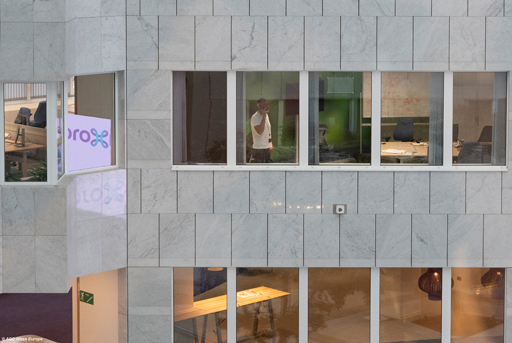Proximus and AGC have joined forces to demonstrate the efficiency and great performance of WAVEATTOCH, a new glass antenna developed by AGC that not only integrates seamlessly into building facades, but also enables operators to accelerate deployment at low cost thanks to its ease of installation.
Since the new glass antenna is transparent and installed indoors (while delivering outdoor coverage), it blends in perfectly with the surrounding urban environment. This makes WAVEATTOCH the perfect transparent alternative to antennas in city centres to provide enhanced mobile data services at higher speeds and for more people.

The WAVEATTOCH antenna is available for most telecommunication frequencies used in Belgium and can be used with any technology (2G, 3G, 4G, 5G). In addition to WAVEATTOCH, AGC has developed the GIL (Glass Interface Layer) and WAVETHRU technologies, allowing WAVEATTOCH antennas to be being installed on any type of insulating glazed facades and ensuring that EMF emissions are within defined regulatory limits.
Bernard Monville, Head of WAVE Venture, said, “Glass antennas can be installed at lower heights and require less transmission power to cover dense urban areas, enabling Proximus to comply with one of the world’s most stringent EMF standards.”
The glass antenna being tested at the Proximus Tower is a 5G antenna (3.7 GHz, 4×4 MiMo) connected to the Proximus 5G network. It was developed at the AGC research centre in Gosselies, Belgium, a state-of-the-art facility that develops and tests integrated antenna glazing technology (for buildings and cars) designed to meet growing connectivity needs.
Geert Standaert, Chief Technology Officer at Proximus, said, “We will continue our trials with AGC. The potential for urban, dense urban and indoor configurations is promising. We look forward to more rollouts in the future.”




